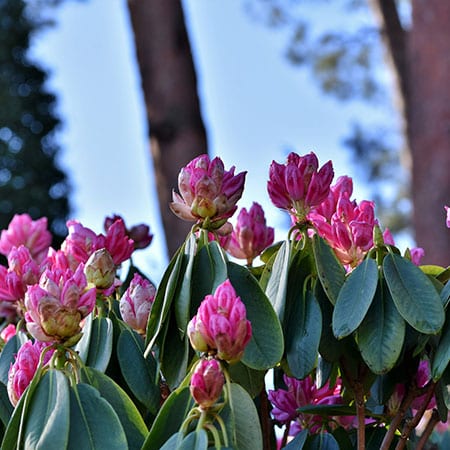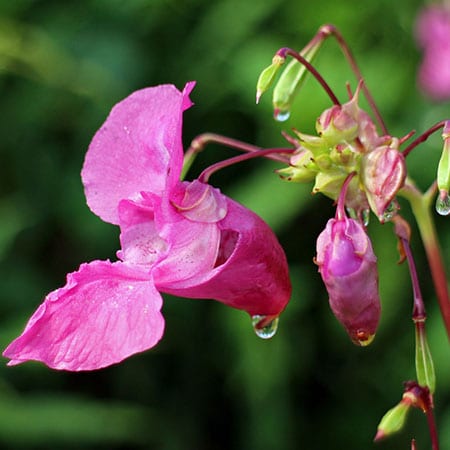The Day of the Triffids
The old adage of managing plants by mouth, match or machine is a good one but certain species continue to cause serious issues. Ian Danby BASC’s head of biodiversity looks at invasive alien plant species.
Invasive Alien Species
Invasive Alien Species (IAS) or as they are also termed, Invasive Non-Native Species (INNS), are alien (non-native) and have been introduced by man since the last ice age some 10,000 years ago. Despite their reputation, not all alien species cause problems. It is the minority that have serious negative impacts on native species, our economy or society. These are the species termed IAS or INNS.
Furthermore, these species are subject to international agreements. These ensure the UK either stops them arriving or limits the damage they do.
Under the UN Convention on Biological Diversity we are committed to conserving and sustaining our biodiversity (variety of habitats and species). This states IAS as the second most important reason for loss of biodiversity.
To respond to this, the EU IAS regulation came into force to ensure that member states were preventing IAS entering their territories. Each country is also responsible for eradicating or controlling IAS already present.
Let’s take a look at plant IAS and in particular those that can have an impact on shoots. (Note, each of the three species highlighted below cannot be planted or introduced to the wild).
Rhododendron

Rhododendron was introduced in 1763 as an exotic garden shrub and in the Victorian era it was used to improve cover under woodlands.
Although it may seem a good way of holding game in woodlands, it is a very dominating shrub that forms thick, impenetrable stands. Native ground flora cannot compete and woodland becomes inaccessible.
Control of rhododendron is a long-term commitment because it is extremely resilient once its root system is established. If you have it on your shoot, see if the landowner can find funding through the woodland grant schemes for control. Forestry Research has useful information and a guide on managing and controlling rhododendron on their website.
A more recent technique called the ‘lever and mulch’ method has been trialled in Scotland. It focuses on destroying the new buds of the plant which are located at or just under the soil. A PDF can be found on the GB Non-Native Species Secretariat’s website.
Japanese knotweed

Japanese knotweed was first recorded in 1886 in Wales. It was introduced as an ornamental plant and grown in parks and gardens.
Knotweed spreads easily by water and can also spread by human activity. It is known to cause issues for game fishermen as it alters the plant and insect communities at the margins of rivers.
Knotweed is not a major issue for a woodland manager because it is not tolerant of shade. However, it quickly colonises riverbanks and waste areas.
Recently, it has received a fair bit of media attention because its roots can damage the foundations of buildings. As a result, it can reduce property values and mortgage ability. It is therefore essential to take action to eradicate it whenever encountered, particularly near buildings.
Control is recommended through chemical application. Mechanical control is not deemed effective.
Himalayan balsam

Himalayan balsam was introduced in 1839 to Kew Gardens having already spread by humans in the past. Unfortunately, it is highly invasive and does especially well in wetlands and beside rivers because its seeds float and travel long distances.
Those of us with an interest in waterfowl need wetland habitats but the continuous stands of this plant shade out native species. It offers little value for waterfowl or most other wildlife.
Control of Himalayan balsam can be mechanical or chemical. Mechanical control centres around cutting for large stands or hand-pulling for smaller areas.
The critical thing is not to leave the lowest node of the plant intact because it can regenerate within a few weeks.
Chemical control is based on glyphosate weed wiping but other products are available for spraying too. We recommend getting advice from the relevant statutory agency first.
What to do
- If you have any of these species where you shoot, do your best to stop them spreading.
- Control is always species specific. There is plenty of guidance out there, and you can always contact us too. The facts of the matter are, the longer a species can expand its range the more costly it is to remove.
- Finally, you can always log your sightings of Invasive Alien Species – or any other species for that matter – through our Green Shoots Mapping website. We use the information you provide to help inform partners where these problem species occur.
